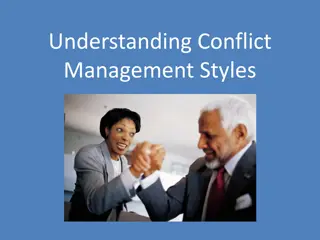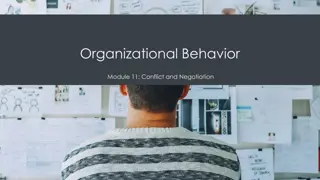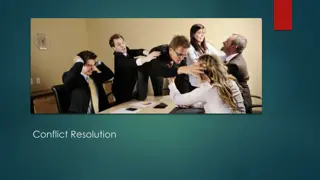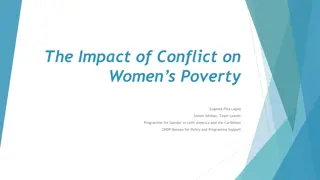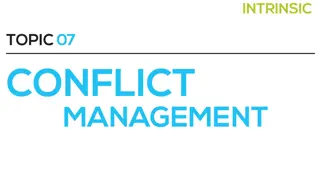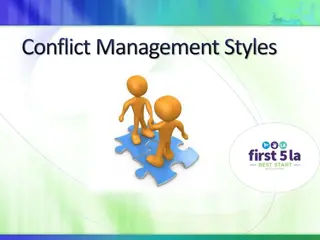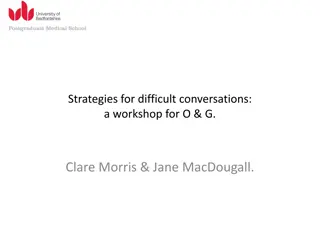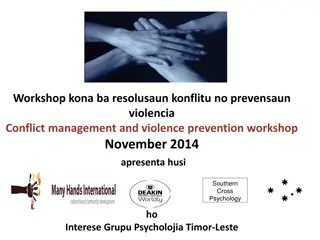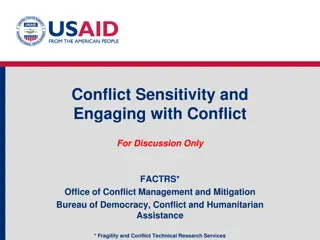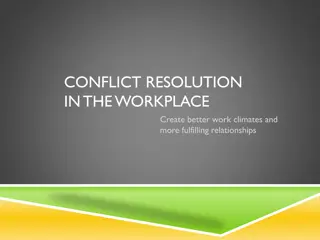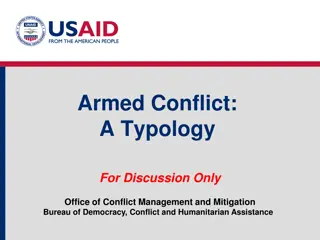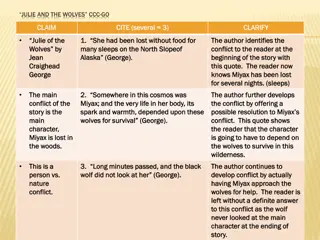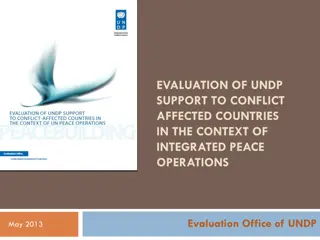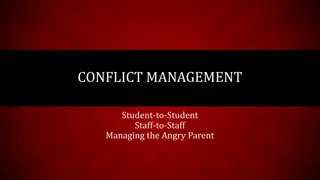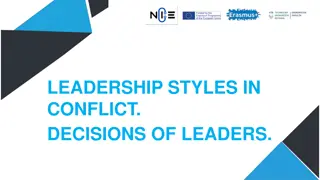
Conflict
In the realm of global politics, conflicts emerge from positional differences between assertive actors, threatening societal values. The Heidelberg Institute for International Conflict Research offers insights into conflict dynamics, escalations, resolutions, and trends across regions. Analyzing the essence of conflicts, it defines them as clashes of ideas and beliefs. Key elements include actors, communication, and conflicting measures. The discourse delves into individual and collective actors shaping decision-making processes, further shaping the international order.
Download Presentation

Please find below an Image/Link to download the presentation.
The content on the website is provided AS IS for your information and personal use only. It may not be sold, licensed, or shared on other websites without obtaining consent from the author. If you encounter any issues during the download, it is possible that the publisher has removed the file from their server.
You are allowed to download the files provided on this website for personal or commercial use, subject to the condition that they are used lawfully. All files are the property of their respective owners.
The content on the website is provided AS IS for your information and personal use only. It may not be sold, licensed, or shared on other websites without obtaining consent from the author.
E N D
Presentation Transcript
Conflict IB Global Politics UWC Costa Rica
Heidelberg Institute for International Conflict Research The HIIK's annual publication Conflict Barometer describes the recent trends in global conflict developments, escalations, de-escalations, and settlements Coup d tat, attempted coups d' tats, as well as implemented measures of conflict resolution are also reported. It is subdivided into five world regions and presents all present conflicts in detailed charts and short descriptions. The methodological approach consists of the conflict definition and the measuring of the conflict intensity.
HIICR Definition of Conflict A political conflict is a positional difference between at least two assertive and directly involved actors regarding values relevant to a society which is carried out using observable and interrelated conflict measures that lie outside established regulatory procedures and threaten core state functions, the international order, or hold the prospect of doing so
Positional Difference and Conflict The essence of a political conflict lies in a contradiction, adequately represented by the concept of a positional difference A positional difference is a perceived incompatibility of ideas and beliefs
Elements of positional difference #1 There must be at least two entities possessing intellectual capacity and vision, and who are capable of communicating. Such an entity is called an actor
Elements of positional difference #2 In order for the actors to sense incompatibility between their ideas and beliefs, there must be reciprocal actions and acts of communication between said actors. These actions and acts of communication are called measures
Elements of positional difference #3 Conflict actors are individuals or collectives that are relevant because they are taken into account by other conflict actors in their decision-making processes. Collective actors are characterized by their high degree of internal cohesion manifesting in a coherent structure of preferences. They include states, international organizations and non-state actors Conflict measures are actions and communications carried out by a conflict actor in the context of a political conflict. Conflict issues are material or immaterial goods pursued by conflict actors via conflict measures
Intensity Definition A political conflict is classified as a dispute if it meets all elements of the basic concept. Dispute A political conflict is classified as a non-violent crisis if physical violence is being implicitly or explicitly threatened to persons or property by at least one of the actors, or if one actor uses physical violence against property, without regarding the injury of people as acceptable. A threat of force is understood as a verbally or non-verbally communicated prospect of violent measures that is based on the conflict item. An acceptance of the injury of persons is present when the use of force against property includes the possibility of the injury of people but the violator is indifferent to this possibility. Non-violent crisis A political conflict is classified as a violent crisis when at least one actor uses force sporadically against persons - or things in case that physical violence against people is considered acceptable. The applied means and consequences altogether are limited. Violent crisis A political conflict is classified as a limited war when at least one actor uses force against persons and maybe things in a distinctive way. The applied means and consequences altogether are serious. Limited war A political conflict is classified as a war when at least one actor uses force massively against persons and maybe things. The applied means and consequences altogether need to be framed as extensive. War
Activity: Evaluate the usefulness of the HIICR fivefold typography of conflict For each of the five categories of conflict give a contemporary example and say why you chose it


